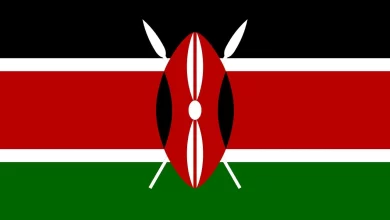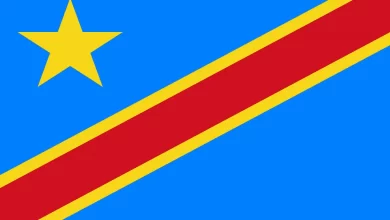Sri Lanka, an island nation located in the Indian Ocean, is renowned for its rich history, diverse culture, and stunning natural beauty. With a tapestry of ancient temples, colonial architecture, and lush landscapes, the country offers a unique blend of tradition and modernity. Home to UNESCO World Heritage Sites like Sigiriya and the sacred city of Kandy, Sri Lanka boasts a vibrant cultural heritage that spans thousands of years. Its palm-fringed beaches, rolling tea plantations, and abundant wildlife make it a sought-after destination for travelers seeking both relaxation and adventure. However, the nation has also faced challenges, including a civil war that ended in 2009 and periodic natural disasters. Despite this, Sri Lanka’s warm hospitality, flavorful cuisine, and captivating scenery continue to captivate visitors from around the world.
- Sri Lanka is an island nation located in South Asia, south of India in the Indian Ocean. It covers an area of around 65,610 square kilometers (25,332 square miles).
- Sri Lanka was previously known as Ceylon during its colonial period under British rule until it gained independence in 1948. The name was officially changed to Sri Lanka in 1972.
- The capital of Sri Lanka is Colombo, which is also the largest city in the country and a major economic hub.
- The official languages of Sri Lanka are Sinhala and Tamil. English is also widely spoken, especially in business and tourism.
- Sri Lanka has a rich cultural history dating back over 2,000 years. It’s known for its ancient cities, impressive temples, and religious monuments, including the Sigiriya rock fortress and the Temple of the Tooth in Kandy.
- Despite its small size, Sri Lanka is remarkably biodiverse. It is home to numerous species of plants and animals, some of which are endemic, meaning they are found nowhere else in the world.
- Sri Lanka is one of the world’s largest tea producers and exporters. The central highlands are covered in lush tea plantations, and Ceylon tea is renowned globally for its quality.
- The country has several national parks and wildlife sanctuaries, including Yala National Park, known for its population of leopards, and Udawalawe National Park, home to a large number of elephants.
- Sri Lanka is a diverse religious landscape with Buddhism being the most widely practiced religion. Hinduism, Islam, and Christianity are also practiced by various communities.
- Sri Lanka’s coastline stretches for approximately 1,340 kilometers (832 miles) and is dotted with picturesque beaches, making it a popular destination for beach lovers and water sports enthusiasts.
- Sri Lanka experienced a prolonged civil war that lasted from 1983 to 2009 between the government forces and the Liberation Tigers of Tamil Eelam (LTTE), a separatist militant organization.
- In 2004, Sri Lanka was one of the countries severely affected by the Indian Ocean tsunami, resulting in widespread destruction and loss of life.
- Sri Lankan cuisine is known for its use of aromatic spices and flavors. Dishes like rice and curry, hoppers (a type of pancake), and kottu roti (shredded roti with vegetables and meat) are popular.
- Throughout history, Sri Lanka has been a significant trading hub due to its strategic location along maritime routes. It was known for spices, gems, and other valuable commodities.
- The Pinnawala Elephant Orphanage is a notable conservation center where orphaned and injured elephants are cared for and rehabilitated.
- The ancient rock fortress of Sigiriya, also known as the “Lion Rock,” is a UNESCO World Heritage Site and a marvel of engineering and architecture. It features impressive frescoes, gardens, and panoramic views from the top.
- Another UNESCO-listed site, Polonnaruwa, was the medieval capital of Sri Lanka. Its well-preserved ruins include statues, stupas, and intricately carved structures.
- There is a city in the country that boasts ruins of an ancient civilization Anuradhapura, including large dagobas (stupas) and monastic complexes. Anuradhapura is a UNESCO World Heritage Site and a major pilgrimage site for Buddhists.
- The Esala Perahera in Kandy is one of Sri Lanka’s most famous festivals. It’s a grand procession featuring dancers, drummers, and decorated elephants to honor the Sacred Tooth Relic of the Buddha.
- Despite its small size, Sri Lanka has a diverse range of climates due to its varied topography. From tropical beaches to cooler hill regions, the climate varies across different parts of the country.
- Sri Lanka is known for its production of precious and semi-precious gemstones, including sapphires, rubies, and topaz. It’s often referred to as the “Gem Island.”
- Traditional Ayurvedic medicine is an integral part of Sri Lankan culture. Many resorts and wellness centers offer Ayurvedic treatments, massages, and therapies.
- Sri Lanka is historically associated with the cultivation and export of cinnamon, a spice derived from the bark of the cinnamon tree.
- Sri Lanka is home to a variety of ethnic groups, including the Sinhalese, Tamils, Muslims, and Burghers (descendants of European colonists). This diversity contributes to the country’s cultural richness.
- Independence Square is Located in Colombo, Independence Square is a historical monument that commemorates Sri Lanka’s independence from British colonial rule.
- Sri Lanka is known for its traditional handicrafts, including intricate wood carvings, batik textiles, and brassware.
- The beaches along the southern and eastern coasts of Sri Lanka offer excellent surfing conditions, attracting surfers from around the world.
- In Minneriya National Park, a unique phenomenon known as the “Minneriya Elephant Gathering” occurs, where hundreds of wild elephants gather around the Minneriya Tank during the dry season.
- Sri Lanka is believed to be the setting for several episodes from the ancient Indian epic, the Ramayana, and places like Ashok Vatika and Adam’s Peak are associated with these stories.
- In recent years, Sri Lanka has been developing its infrastructure, including modern highways, urban development projects, and improved public transportation.
Quick Facts about Sri Lanka
- CAPITAL CITY: Colombo
- POPULATION: 2.22 crores (2021)
- POPULATION RANK: 61st
- LARGEST CITY: Colombo
- OFFICIAL LANGUAGES: Sinhala,Tamil,English
- GDP NOMINAL: 8,892.73 crores USD (2021)
- GDP RANK: 76th
- CURRENCY:Sri Lankan Rupee
- FOUNDED:4 February 1948
- FATHER OF THE NATION:D. S. Senanayake
- TOTAL AREA: 65,610 km2
- AREA RANK: 123rd worldwide
- CONTINENT: Asia
- AVERAGE LIFE EXPECTANCY: 76.39 years
- ARMY STRENGTH: 203,000
- ARMY RANK: 71st
- LITERACY RATE: 92.38%
- PER CAPITA INCOME: 14,370 PPP dollars





